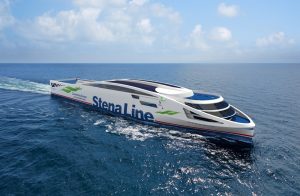In 2020, Stena Line continued to reduce its total CO2 emissions and is ten years ahead of the IMO international shipping emission reduction targets. Nevertheless, the Swedish shipping company is now accelerating the transition towards fossil-free shipping and presents its plan to reduce total CO2 emissions by as much as 30% until 2030.
Despite a challenging year, Stena Line continued to reduce its total carbon dioxide emissions in 2020. Emissions also decreased per nautical mile sailed by -2.3%/nm, which shows that the ships have become even more energy efficient in 2020.
 “We are working hard to reduce our fuel consumption and emissions, while at the same time exploring tomorrow’s fuels and technologies. The main drivers behind the reduction of emission in 2020 are that we have introduced three new, and up to 30 % more energy-efficient vessels, on the Irish Sea.
“We are working hard to reduce our fuel consumption and emissions, while at the same time exploring tomorrow’s fuels and technologies. The main drivers behind the reduction of emission in 2020 are that we have introduced three new, and up to 30 % more energy-efficient vessels, on the Irish Sea.
“We have also introduced renewable shore electricity during port calls in Kiel and five more ships in the fleet have been equipped with the AI assistant Stena Fuel Pilot to support our captains in operating the vessels in the most energy-efficient way,” says Erik Lewenhaupt, Group Head of Sustainability at Stena Line.
“Our ambition is to lead the development towards fossil-free shipping and sustainable transportation by sea. This requires that we need to break our dependence on fossil fuels and start reducing our total emissions, not only become more efficient per sailing and transported unit. Therefore, Stena Line has now chosen to set the ambitious target to reduce our total carbon dioxide emissions by 30% by 2030, because in the end they need be zero” says Stena Line’s CEO Niclas Mårtensson.












